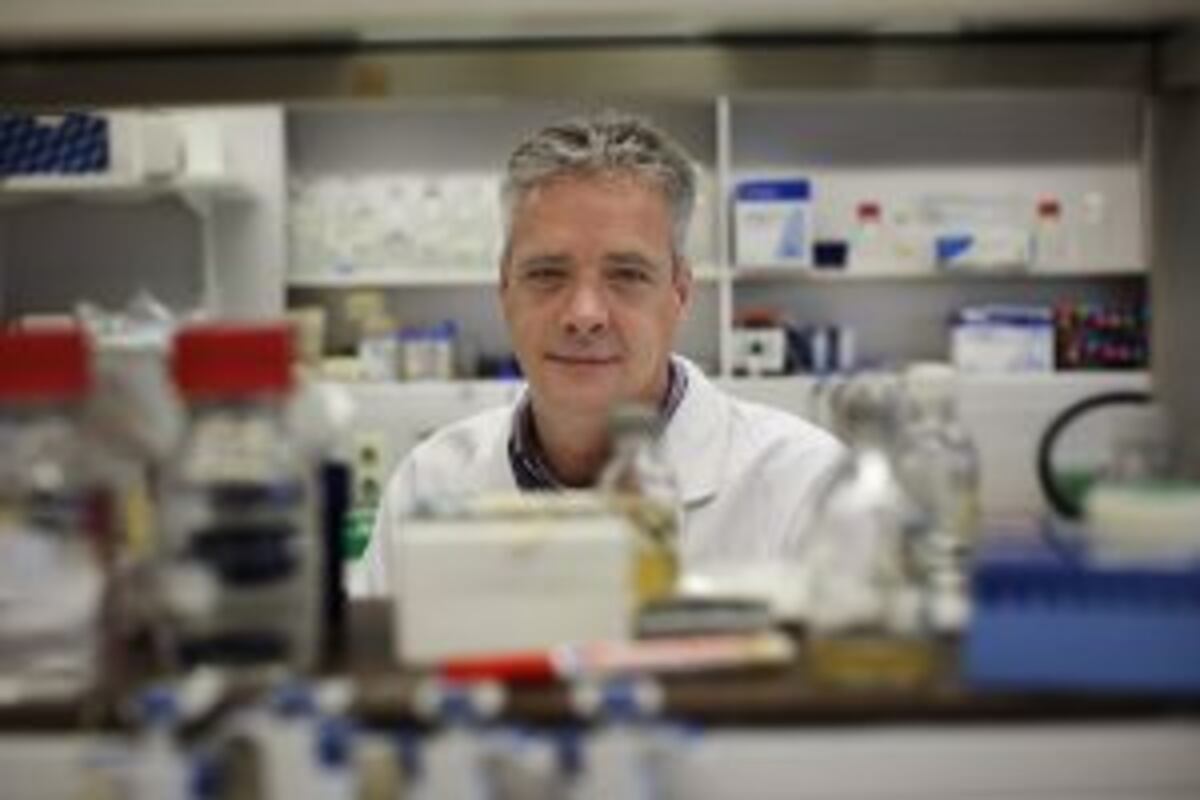Spanish-English translation
We must share data to prevent a pandemic H5N1"
ISABEL FERRER Hague 23 ENE 2012 - 10:21 CET23
Filed in: Avian Flu Flu Respiratory Diseases Diseases Medicine Scientific Research Health Science
Ron Fouchier, in his laboratory. / Dirk-Jan Visser (CORDON PRESS)
Freedom of research and dissemination of scientific experiments and the fear that these findings be used for bioterrorist attacks waged a hard pulse. Two teams of experts in infectious diseases in Europe and the United States have discovered genetic mutations necessary for the transmission of H5N1 between people, which could have deadly consequences. And there was an unprecedented event. Science and Nature , the most prestigious scientific journals, have delayed the submission of work to pressure from the U.S. Scientific Advisory Board for Biosecurity, an advisory body of the Government. The magazines simultaneously announced last week suspension for 60 days from publication.
In Holland, Ron Fouchier, a virologist at Erasmus University Medical Centre , Rotterdam, and responsible for one of the studies, argues that publishing the results of the research is essential to protect global public health. "If we do not share information with the rest of the scientific community, it will be difficult to prevent a possible pandemic," he told this newspaper Fouchier from his office on the eve of the moratorium.
In Washington, however, biosafety experts say that only by removing the methodological details "you can avoid falling into the wrong hands." In other words, it is best not to let technician to trace anyone is launched to create a biological weapon. Yoshihiro Kawaoka of the University of Wisconsin (Madison) has found the same mutations.
Both Fouchier as Kawaoka and his Spanish colleague Adolfo Garcia Sastre, School of Medicine, Mount Sinai Hospital (New York), took the voluntary moratorium. In a letter signed by all researchers (39 in total) and explain that they want to give time for discussion on the risk they can assume their jobs, and acknowledge the alarm arose. Now, scientists and addresses of Science and Nature study in two phases.
Fouchier Dutchman discovered how the virus can jump between people
"In Science will be a shortened version and informative, and a longer one for scientists subject to confidentiality requirements outlined by the United States," says Fouchier, shown as educated as forceful. "We knew it was possible to find genetic mutations [five in this case] for the H5N1 virus could be transmitted between humans by air, by coughing and sneezing. Work at maximum biosafety and there are risks, of course. But the greater the benefits of preventing a possible avian flu pandemic. These obstacles hinder scientific development. In the U.S., however, the danger of bioterrorism seems enormous. "
Avian influenza is an infectious disease that affects birds and is transmitted between them through feces, food and water or by air. Transmission from animal to human being is unique and requires a direct and constant contact. For now, the only sign of human transmission has been found by the World Health Organization in an Indonesian family who lived crowded.
"Since 2003, there have been several outbreaks of H5N1 in poultry, and to contain them must be sacrificed. There have been episodes in Asia, Middle East and Africa, countries where it is difficult to eradicate. When he appeared in the Netherlands eight years ago, had to kill 30 million and domestic poultry. A very difficult operation in areas developing food shortages. The 2003 outbreak began in Asia and spread to not act immediately, "says Fouchier.
During their experiment used ferrets, a mammal whose flu response is like that of humans. After changing the H5N1 virus, a variant was obtained easily from one animal to another. "We do not believe in anything and yet, when the virus attaches to receptors on cells in the respiratory tract, and we suffer the same animal. Even if it leads to pneumonia. "
"The pressure is tremendous and U.S. experts on biosafety prevail"
According Fouchier, some of the mutations of the virus found in the laboratory and would have occurred naturally in various parts of the world. "We may never trigger a pandemic, but our task is to develop and test vaccines and antivirals and share data with countries and laboratories need to prevent a possible pandemic. Look how much we learned in 2005 studying Spanish flu [that killed 40 million people between 1918 and 1919]. It was a destructive virus and nothing happened with research data, "he continues.
One of the things that bothers him is the time spent on explaining your position. "I am immersed in a maelstrom and I noted that in Europe the information campaign is measured and scientists speak. In the U.S., the pressures are tremendous and biosafety experts prevail. " He has received funding from the U.S. National Institutes of Health. "The current global political climate may explain these differences. Although it would make sense that virologists say what should be done, and bio specialists recommend how. We would have reservations, but not this, "he says.
Although the flu virus mutates quickly, and pandemics are usually cyclical, to the Spanish flu was followed by the Asian (1957), Hong Kong (1968) and Russia (1977) - The vaccine can only be achieved if there subtype able to reach people. "We must prepare. The possibility of a pandemic is small, but its effects would be tremendous, "says the Dutch virologist.
